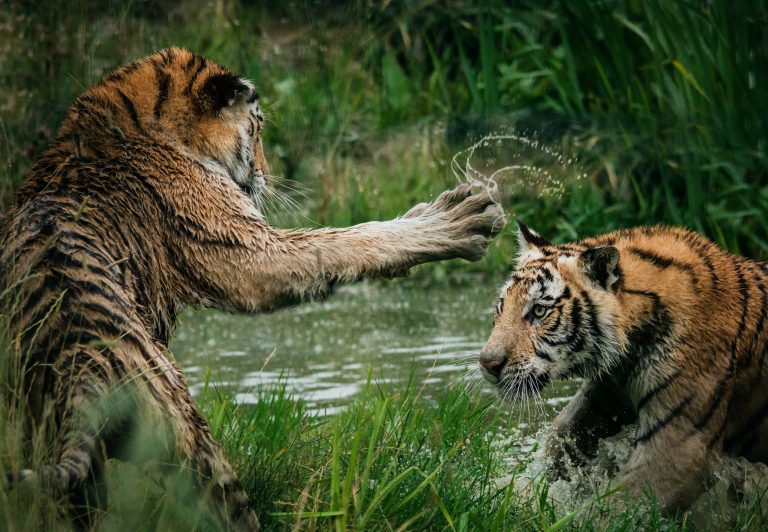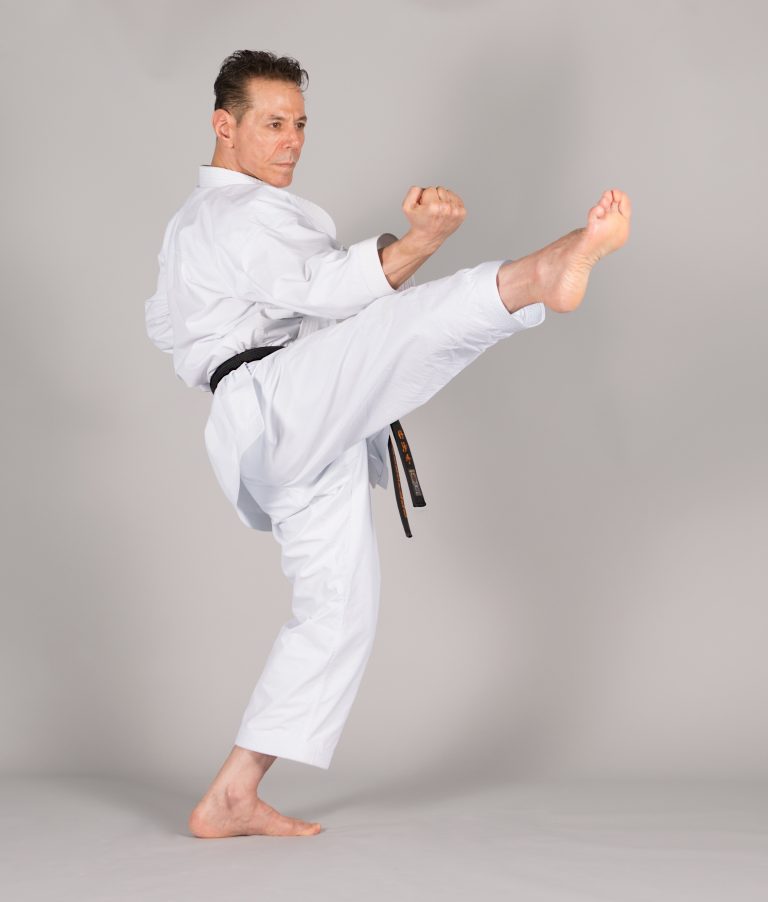What is the Difference between Kumite and Kata in Karate?
Karate, a Japanese martial art, is well known for its graceful and powerful moves. While much of the art is focused on mastering different styles and techniques of self-defense and combat, there are two main components that make up the sport: kumite and kata. Both components require disciplined practice and technical knowledge, but they are distinct in their applications and goals. Let’s take a look at what sets them apart.
Kumite: The Free-Style Art of Sparring
When picturing karate, many people immediately think of kumite. This is the component that encompasses the art of sparring, where two people compete against each other in an organized match. It is an extremely physical form of martial arts, as competitors use a combination of blocks, strikes, and throws to gain an advantage over their opponent.
The rules for kumite are set by the World Karate Federation (WKF), and typically matches are divided into three, one-minute rounds. Judges award points for valid moves such as strikes, throws, and sweeps. In free-style kumite events, competitors attempt to outscore their opponents. Otherwise, pre-arranged points, or “ippon”, can be awarded for harder techniques such as kicks or combinations.
Although there is an element of competition in kumite, it is primarily used as a tool to refine movements and become skilled in self-defense. Through sparring, practitioners become more aware of how to control their bodies in real combat situations and how to detect weaknesses in their opponents’ movement. As such, many consider kumite to be the most difficult component of karate because it requires the most physical strength and skill.
Kata: The Formal Art of Sequencing
In stark contrast to kumite is kata, which is primarily focused on perfecting a series of choreographed movements strung together into fast or slow sequences. The movements, which are performed without a partner, are often same-side dependent, requiring the practitioner to imagine two opponents attacking them from opposite directions.
Kata require both physical and mental concentration since practitioners need to precisely memorize the sequence of moves and the timing between them. Progression through kata teaches the practitioner to build speed and strength while flowing seamlessly from one move to the next. Additionally, executing kata demonstrates increased understanding and knowledge of techniques since they must be performed without pause or hesitation.
Kata are also traditionally used to explore themes related to strategy such as observing your opponent’s posture or controlling fist distance between you and your opponent. Combined with consistent practice, this helps practitioners explore and internalize more complex ideas about martial arts.
Differences in Practice and Competitions
It’s important to understand that kumite and kata differ significantly in vigorousness and intensity levels. Kumite requires practitioners to have a wide variety of defensive skills at their disposal for combat against an opponent. Kata, on the other hand, does not focus so much on defense since the focus is mainly on form and technique.
In terms of competition, competitions consist primarily of matches where one competitor faces off against another. Kata competitions involve judging performances based on accuracy and skill in executing each individual move of a sequence within a set pattern. Judges rate performances on complexity of techniques fired off at different speeds, power, balance, and composition.
The Benefits of Practicing Both Kumite and Kata
Although kumite and kata are two distinct components of karate, it is important to understand that they both offer benefits that can be used together to improve overall mastery of the art form. For instance, kumite can help refine technique used in self-defense and visualizing an opponent’s movements, while kata encourages practitioners to focus on refining their form and strengthening muscles important for every move.
Kumite also teaches concentration and reaction times, allowing practitioners to anticipate moves before they happen and plan ahead on how to respond if needed. Meanwhile, working through with kata requires practitioners to continually strive for perfectionism in each move because one mistake during a sequence can negatively impact the performance as a whole.
By embracing both components of karate – kumite and kata – practitioners not only improve their overall technique but also increase their physical strength and mental clarity. Over time, this allows practitioners to develop both their physical skills as well as their sensei’s wisdom; a combination that creates a well-rounded martial artist who can be a great asset on any battlefield or dojo.
Conclusion
Karate is a dynamic martial art that is composed of two distinct components – kumite and kata – that offer different advantages in terms of both technique and skill development. Kumite sharpens defensive abilities while kata focuses on refining form and perfecting individual movements within a sequence. Although seemingly different in application, both components offer unique benefits that can be used in concert to improve overall mastery of the art form; together they create a well-rounded martial artist capable of facing any challenge.
What is the Difference between Kumite and Kata in Karate?
Karate is a combat sport that involves various forms of martial arts techniques. It is one of the most popular martial arts disciplines globally, and it has grown in popularity over the years. One frequent question that arises among karate enthusiasts is about the difference between Kumite and Kata. These are two of the primary forms used in karate training, and in this post, we’ll explain the differences between them.
What is Kumite in Karate?
Kumite refers to sparring or fighting with an opponent. It is a physical exercise that aims to apply techniques learned in training in a simulated combat scenario. Kumite is an essential part of Karate training since it helps to develop fighting skills and techniques. There are three types of Kumite:
1. Kihon Kumite
In Kihon Kumite, two people work together to practice basic techniques of Karate, such as kicks, punches, and strikes. Kihon Kumite typically involves prearranged attacks and defenses, and the primary goal is to perfect techniques and movements.
2. Jiyu Kumite
Jiyu Kumite is sparring with an opponent where both parties are free to choose their techniques but within specific rules and regulations. The goal is to gain points by striking vital areas on the opponent’s body or rendering them unable to continue fighting. Jiyu Kumite requires a lot of precision and agility.
3. Gohon Kumite
Gohon Kumite is a prearranged sparring technique in which one person takes on five opponents successively. The technique aims to develop the student’s ability to fight multiple opponents and improve their defense skills.
What is Kata in Karate?
Kata is a set sequence of movements and techniques performed alone. It is a vital part of Karate training and helps to develop specific skills and techniques. Kata is a traditional Japanese method of teaching martial arts that has remained unchanged for centuries. There are three types of Kata in Karate:
1. Taikyoku Kata
Taikyoku Kata is the most basic form of Kata and involves a series of movements designed to teach basic techniques.
2. Kihon Kata
Kihon Kata is a more advanced form of Kata than Taikyoku Kata. It involves more complex movements and techniques that focus on perfecting specific techniques and movements.
3. Kumite Kata
Kumite Kata is a form of Kata that involves prearranged sparring and attacks. The techniques and movements involved in Kumite Kata are more complex and challenging than those in Kihon Kata and Taikyoku Kata.
Key Differences between Kumite and Kata in Karate
While Kumite and Kata seem to serve the same purpose, which is to develop Karate techniques and movements, there are a few differences between these two forms. Let’s examine some of the key differences.
1. Kumite is Practical, Kata is Traditional
The most significant difference between Kumite and Kata is that Kumite is more practical and involves simulated combat scenarios where students practice fighting techniques against an opponent. On the other hand, Kata is more traditional and involves individual movements and techniques designed to perfect specific skills and techniques.
2. Focus on Technique vs Free Movement
Another difference between Kumite and Kata is that Kumite focuses on perfecting techniques by applying them in a live scenario, while Kata focuses on an individual’s movement and technique. Kata, therefore, emphasizes precise movements, while Kumite emphasizes free movement, reactions, and strategy.
3. Different Forms and Techniques
Kumite and Kata also differ in the form and techniques used. Kata is more structured and follows a particular set of movements and techniques. Kumite, on the other hand, allows freedom of movement and technique, which makes it more unpredictable.
Conclusion
Kumite and Kata are two of the most popular forms of training in Karate. Although they may appear similar, they have a few differences in terms of their purpose, technique, and approach. Kumite is designed to develop fighting skills and techniques, while Kata is a more traditional form of training that involves perfecting movements and techniques. Both forms are essential for anyone looking to train in Karate, and it is critical to choose a training style that aligns with your goals, learning style, and aspirations.
Inhaltsverzeichnis






